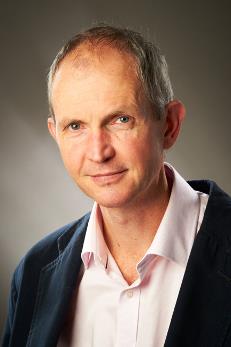Cambridge 7th to 9th September

Presenting Author:
Jonathan Knight
<j.c.knight@bath.ac.uk>
article posted 13 Mar 2015
Jonathan Knight
Jonathan Knight is Professor in the Department of Physics at Bath, and is currently Head of Department. He obtained his PhD at the University of Cape Town, South Africa, and did postdoctoral research at the Ecole Normale Superieure in Paris and at the Optoelectronics Research Centre in Southampton. At Southampton, working with his colleagues Philip Russell and Tim Birks, he designed, fabricated and demonstrated the first working example of a new type of low-loss optical fibre - a photonic crystal fibre or PCF.
Since moving to Bath in 1996 he has developed a world-leading team working to fabricate and characterise different forms of PCF. He was a co-founder of the Bath spin-out company Blazephotonics which worked to develop PCF commercially until it closed for business in 2004. He is a frequent invited speaker at international conferences and has published well over 100 papers in international journals.
He says: 'I'm interested in light: how it works, and how we can use it. On a good day, how we can make it do things it doesn't normally do! I work in the Department of Physics at the University of Bath, in the Centre for Photonics and Photonic Materials. The CPPM provides an environment for me and those working with me. This environment includes not just facilities and resources, but also meetings, ideas, scientific interaction, and ultimately fun and friends.'

Hollow core Microstructured Optical Fibres:
reflections on tiny bits of glass
Jonathan Knight
Centre for Photonics and Photonic Materials, Department of Physics,
University of Bath, Claverton Down, Bath, BA2 7AY, UK
j.c.knight@bath.ac.uk
In conventional optical fibres, light is trapped within a solid "core" made of glass, which is surrounded by a slightly different "cladding" glass which has a lower refractive index. This arrangement of refractive indices leads to the possibility of light being trapped within the core by total internal reflection and propagating along the fibre without leakage. Because the trapped light travels through glass, so the optical properties of the fibre are generally limited by the properties of the glass which forms the core and through which the light must travel. Some of the most important properties of fibres such as their spectral transparency, damage threshold, dispersion and nonlinearity are all limited in this way. The purpose of this talk is to describe alternative optical fibre designs in which this limitation is overcome by trapping the light in a hollow core.

The difficulty is how to prevent light from leaking from the hollow core. Total internal reflection is not an option because there are no suitable materials with refractive index lower than that of air which could be used as a cladding. However, it turns out that very effective reflectors can be created by introducing wavelength-scale microstructure into the glass, and these reflectors can then be used to confine light in the hollow core. The resulting fibres can outperform conventionally-designed fibres in several key respects, and will find application in a range of fields including mid-infrared laser transmission, high power and ultrashort-pulse laser delivery, and novel forms of fibre laser.
